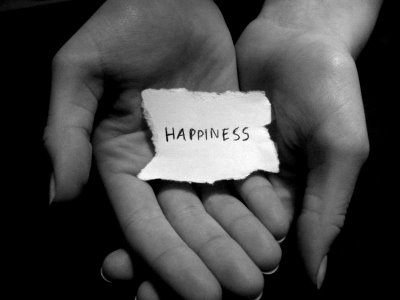Are most entrepreneurs happy? I’m not sure, but of the ones I’ve met, most seem to be. I’ve always had a feeling of happiness, ever since childhood. It doesn’t mean that I don’t have down days, everyone does. But for the most part, I am really happy and I started to ponder why that is. In this post I will share with you a bit of my self-reflection.
“Happiness is when what you think, what you say, and what you do are in harmony.” Mahatma Gandhi
8 Keys to this Entrepreneur’s Happiness
After a bit of reflection, I’ve identified things that have created happiness for me:
- Exercise – As a kid, I spent lots of time outside: hunting, riding my bike, playing sports, and walking the farm where we lived. Once I graduated college, I started working out with weights and doing cardio every week. Now 30 years later, I continue to workout every week and intertwine lots of outside activities into my day (cycling, hiking, walking, golfing, etc.). Although I did not start working out to feel happy, it just happened. Exercising increases your self-esteem and it releases endorphin, the happy chemical.
- Relationships – I try to surround myself with like-minded and positive people. I have an incredible wife, great kids and friends that I try to do things with weekly. It may be just a chat or a golf outing, but it is important to build and maintain relationships.
- Being Nice – Being nice to others is rewarding. I like to greet people with a “hello” or “good morning” and strike up conversations with people I don’t know and I say “thank you” and “please”. I don’t try to monopolize conversations, I learn a lot about a person by just listening. And I love hearing about people’s successes, no matter how trivial or monumental.
- Money – As they say, money can’t buy you happiness but neither does poverty. I do think that a certain amount of money can aid in happiness– at least enough that satisfies your immediate needs (food, clothing, housing and health care). Past that, “wants” tend to disguise themselves as “needs”. I’ll admit that I could be much more frugal but I do get a rush of adrenalin when I under spend my budget for a month.
- Optimism – I am wired to think that everything is going to work out well and many times it does. When things don’t, I try to learn from it and use that knowledge in the future.
- Hobbies – Work hard but play harder. I’ve met lots of people who consume themselves with work and when they get a day off, they don’t really know what to do with their time. Having hobbies will make you happier. What are mine? I love to cycle, play golf, fish, travel, hike, swim, hang out at the beach, boat, watch college and pro football — just to name a few! I also set goals for my hobbies (like cycling 50 miles in 3 hours, hiking a strenuous mountain, and lowering my golf handicap).
- Being Grateful – I realize how lucky I’ve been. My parents sent me to college but they nor their parents or their grandparents had the opportunity to do it. I couldn’t have built and sold my software company without learning from some incredible mentors. I am lucky to have an incredibly supportive family and our kids have grown up to be something we are truly proud of. I survived cancer at just over 30 years old. I’ve been really blessed.
- Faith – I don’t consider myself a religious person but I do consider myself a spiritual person. I grew up in the church but don’t attend regularly. However, I have a close relationship with my maker and pray everyday. I’ve personally witnessed the power of faith.
This Article Was Brought to You by 2HourAppreneur
This article was brought to you by 2HourAppreneur makers of the aMemoryJog Password Manager app.

Every few days, 2HourAppreneur publishes an article that we think is cool, thought-provoking, motivational, or makes life more fun and a bit easier. If you would like to receive these articles in your email every few days, sign up below.
If you prefer to check Facebook for the blog postings without getting an email, you can LIKE my Facebook page here and the posts can be seen from there or follow me on twitter.
Conclusion
Hopefully these 8 keys are helpful to my readers. I would also like to hear your stories and understand what makes you happy. Please leave a comment!

































